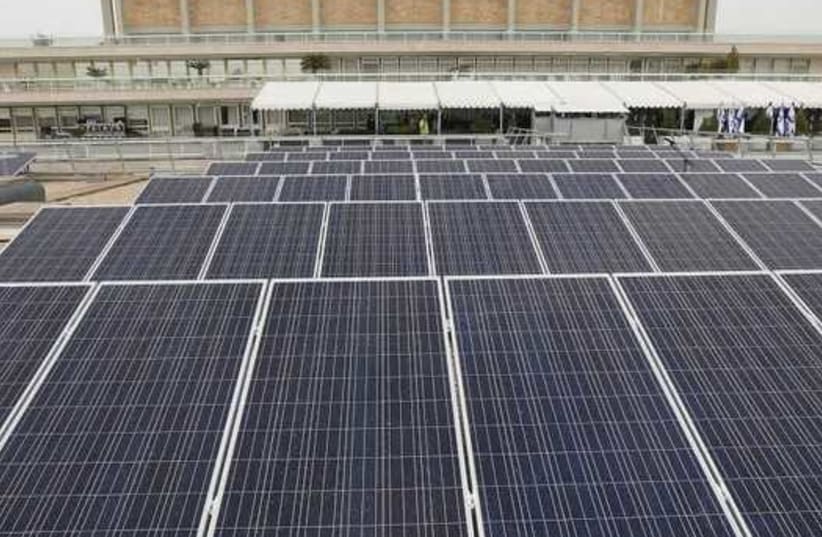According to a recently published annual report by the International Energy Agency, Israel came first among the OECD countries in solar energy generation out of total electricity consumption. At the end of 2019, Israel’s solar energy production was at 8.7%, positioning the country in second place worldwide, only after Honduras.
Let’s start with the fact that there is definitely room to give positive reinforcement to the State of Israel for its energy achievements.
In recent years, Israel has finally switched to the construction of renewable energy facilities (mainly photovoltaic installations) and is building these facilities at a higher rate.
This positive change has also occurred due to the easing of national regulations, lower prices and continuous improvement in solar panel efficiency, and thanks to directing funding to the field.
Today, Israel is on the verge of meeting its target of producing 10% of its electricity from renewable energy by the end of 2020. However, alongside the compliments, we must also ask what is really behind the positive data: Is this a real achievement?
Can we rest on our laurels? Is Israel leading humanity in reducing greenhouse gas emissions, reducing climate change, reducing air pollution and eliminating the dependency on nonrenewable resources?
Unfortunately, the answers are not so flattering to Israel.
As already mentioned, the outstanding achievement stated in the articles that discuss the ranking is the optimal rate of solar energy generation out of the country’s total electricity consumption (No thermal systems, like the concentrated solar power facility in Ashalim or solar water heaters).
The fact that Israel is ranked second in the world after Honduras suggests that reality is more complicated. Honduras is a developing nation in Latin America, ranked in the lower third of the world by many economic, social and health indicators. So how is it possible that such a country leads the world in an index that looks so innovative and groundbreaking?
There are several factors to this: Most OECD countries are located in temperate climate zones (with more water and wind resources and less solar radiation) and thus rely more on wind energy, hydroelectric energy and heat energy from biomass or waste burning as major sources of renewable energy. In these countries, solar radiation is generally lower, and annual solar hours are lower than in Israel (and in Honduras). In Israel, a solar panel receives about 120-140% more annual sun radiation than the same panel in a temperate climate.
In Israel, the most abundant and lucrative renewable energy source is solar energy. There is not much wind in Israel and of course there is no running water in quantities relevant to hydroelectric energy production. Therefore, in today’s technology landscape, Israel is left to use primarily solar energy.
To see behind the curtain, one has to look at all the renewable energy sources that generate electricity. Such an examination will show us that 27% of electricity consumed in the OECD countries comes from renewable energy, while in Israel, it’s only about 9% (as of the end of 2019).
Moreover, the leading OECD countries in this index, Iceland and Norway, generate 10 times more renewable energy than Israel.
But electricity is only part of the story.
Looking at the total production and energy consumption in the country (including transport, heating, cooling, industry), it becomes apparent that by the end of 2019, only 5-6% of all energy use in Israel came from renewable energy sources. While the average among the OECD countries stands at 11%.
This is because Israel produces renewable energy that is almost exclusively limited to solar water heaters (and some biogas and waste incineration), while many OECD countries heat buildings through renewable sources (biogas, thermo-solar, geothermal, waste incinerator heat and biomass). Therefore, when looking at the Israeli energy sector as a whole, great work is still ahead of us.
If we had reached the current achievement a decade ago, or even five years ago, this could indeed be a reason for partying and pride in Israeli innovation and leading the world in the field. The truth is, however, that Israel is lagging far behind the developed world (and even some developing countries) in terms of the use of renewable energy.
To play its part in combating the climate crisis and reducing pollution and environmental damage, Israel must reach at least 50% of electricity generation from renewable sources by 2030. The progress made in Israel in recent years (and similar achievements that seem to have fallen short in Egypt, Vietnam and other countries) shows that ambitious targets can be reached, with the right policies and incentives.
A crucial step in achieving these goals is the cessation of natural gas production. Gas dependence is a step we will find difficult to overcome in the future and one that prevents Israel from significantly reducing its greenhouse gas emissions in the coming decades.
The transition from coal and oil to natural gas, even if it improves the quality of the air we breathe, does not reduce greenhouse gas emissions. Additionally, natural gas and its infrastructure, such as transmission lines and gas stations near the cities, come at the expense of long-term investments in renewable energy and other low-carbon solutions.
If Israel wants to rank high (truly) in the use of renewable energy, it must allocate larger budgets and encourage large-scale investments in the field of renewable energy, promote significant energy storage, promote the establishment of a smart electricity grid and invest in research and development in the field.
The writer is a researcher and consultant in the fields of energy, environment and government.
